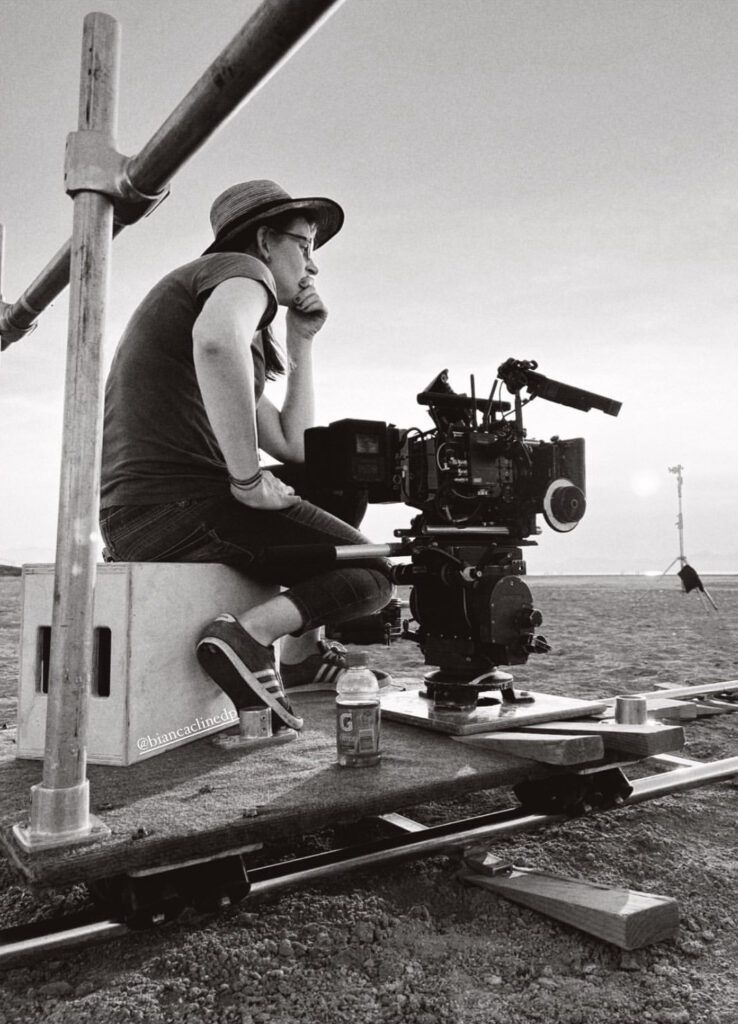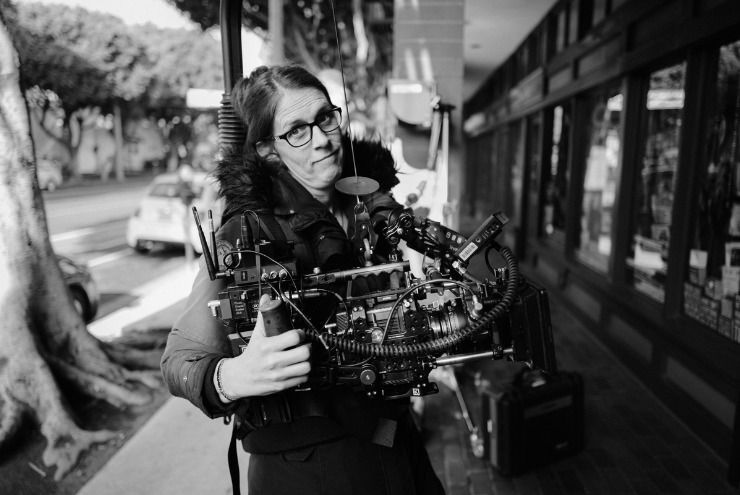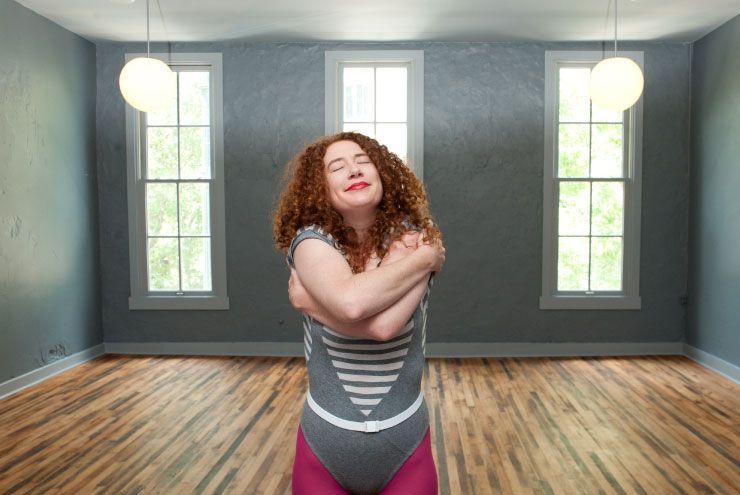By Barrett White
“I think that there are two very distinct worlds, in terms of what Los Angeles means to people who live there,” shares Bianca Cline, cinematographer and native Angeleno. “I was not aware of the stereotypes of L.A. There’s Hollywood and glamor and models, and that’s what everyone on the outside sees, but Angelenos know a very different version of L.A.”
She’s honest and resolute when discussing the city; she’s not going to put it on a pedestal, but you can tell she’s proud to call it home. Though she didn’t grow up in the film industry, proximity to it fueled her creativity from an early age. As a child, she made films with her friends and siblings and later worked for a camera repairman in her teens. “Filming these little movies as a kid, my mom told me one day, ‘You know that’s a real job, right?’ and I knew immediately, yeah, that’s what I’m gonna do.”
Cline’s film credits go back 20 years, notably including the Peabody-nominated Belly of the Beast and myriad award-winning commercial spots for heavyweights like Oreo, Nike, Champion, Citibank, and Airbnb. Most recently, she served as director of photography for A24’s summer feel-good blockbuster Marcel the Shell with Shoes On.
When Marcel hit theaters in the summer of 2022, millennials flocked to see the sentient one-inch seashell we had all come to know and love from the viral YouTube video of the same name. Marcel is charming and humorously witty and leaves viewers with that comforting tingle one can only experience following a healthy dose of nostalgia. The media frenzy surrounding Marcel’s release was more than Cline was used to, but it offered her the opportunity to not only discuss the brilliant cinematography that went into bringing the seashell to life (stop-motion and live-action was no small feat), but to also address the notion that, this film you love? A trans woman made it.
“Hierarchically, being trans is not the main thing that defines me,” Cline says. “But it is a very important part of my life. It’s consumed so much of my life, you know, thinking about it when I was a kid and wondering how I was going to handle it.”
“When I was a kid, there were two options,” she continues. “Keep it a secret, or come out and risk homelessness or violence. It was literally life or death.”
Now that she’s out, however, she muses on why representation matters. “I wish it didn’t. I wish it were as easy to explain as any trait, like having red hair or ‘a thing I was born with, but I dealt with it.’ You know, when I was a kid, I didn’t see myself as a trans woman. I saw myself as a woman. And because of the body I was born in, my only option was to be a trans woman.”

—Bianca Cline
And language matters, she adds: Trans women are women. “I don’t like the term, ‘identify as’ because that sounds like a verb, a choice, like when you’re a kid and you say, ‘I want to be a firefighter.’ My identity as a trans woman is a fact, the same as someone saying ‘I’m tall,’ ‘I’m short,’ or ‘I’m German.’ I didn’t do any kind of active identification. I just am, and I have to work with that pragmatically in the world.”
On the other hand, representation is crucial for trans youth, both on- and off-screen. “Because the world is so obsessed with discussing trans people, especially those who hate us, I find it important to talk about it.”
“I did something that people are interested in—at the moment, that’s Marcel the Shell—but in general, being a cinematographer makes me fairly visible and with this platform, I can do something about it.”
She continues, “I have the ability to show people, Hey, you know that movie you really love? Just so you know, a trans person made that. I have the ability to show people the opposite of the deviant stereotype that people like to pigeonhole us into. You know that pop culture icon you love? A trans person is also behind that.”
With Marcel coverage in them, Vanity Fair, and countless industry papers, Cline has sat comfortably in the spotlight for months—and with coverage comes response. “What I didn’t foresee was how many parents of trans kids have reached out to me. Parents of trans kids have most of the same fears that trans kids do, like fear of getting rejected by community, fear of not getting a job, or that they won’t find love.”
Parents of trans teens, she says, are the same age as her. The playing field even, they often reach out to thank Cline for quelling their fears and demonstrating that a happy, productive life and family are possible. In fact, it was her transition, she says, that informed the work that she’s renowned for today.
“I see my role on a film as being an interpreter,” Cline writes on her website. “I translate the written word of the script into the language of imagery.” It’s a powerful statement on the marriage of written and visual arts, and one that she says she didn’t fully understand until she came out.
“It was the first time I was able to be myself,” Cline recalls. “I had opinions on filmmaking before that, but they were all very surface-level. After transitioning and allowing myself to have opinions on things that were authentic and personal, I was able to apply that to cinematography. I could bring all the parts of my life—growing up in a Mormon household, living in different countries, speaking multiple languages, being a mother—and apply them to the story I was telling.”
With the success of her achievement on Marcel the Shell under her belt, Cline looks forward to the stories she’ll have the opportunity to bring to life next. “I would love to work with Greta Gerwig,” she drops. Among her dream projects is to tell a trans story, through a trans gaze, by trans people—but for Cline, this serves as something deeper than a vanity project.
“All of my history is valuable in telling any story I find worth telling, but I have a lifetime of history that could be so valuable in telling a trans story,” she says. “With a film, you get to experience something. You can feel the material. I hope that if I get to tell a trans story, that I can help other people feel what it feels like to be trans or to be queer.”
“I think people change their minds when they understand; when they feel it,” she adds. “No amount of facts or statistics are going to change someone’s mind, not on something as heated or emotionally rooted as trans rights; or just how to love a trans person in your family or community. But watching a film and feeling it could carry the power to change minds.”







